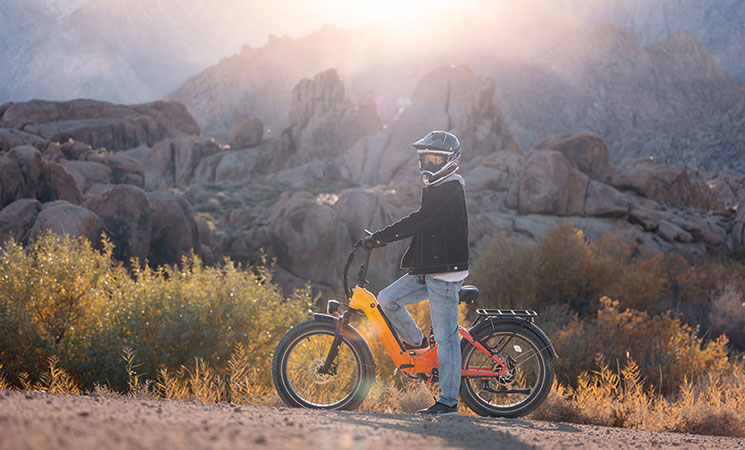Choosing the right electric bike isn’t just about looks; it’s about comfort, safety, and getting the most out of every ride. A good fit gives you better control, reduces fatigue, and helps prevent injuries. With e-bikes booming in popularity, understanding how to size one is key. This guide will walk you through the steps to find an electric bike that fits your body and riding style.
Frame Size Matters
A bike’s frame size is usually measured from the crank (the pedals) to the top of the seat tube. It’s crucial to finding the right fit, typically in centimeters or inches. While different bike types (mountain, road, electric) might have slight variations, frame size is a good starting point for any bike. Understanding this measurement lets you compare models across brands and types.
Why Size Matters for E-Bikes
The right electric bike size is essential for maximum comfort and performance on an electric bike. Riding a bike that is too big or small can lead to awkward posture, less efficiency, and even pain or injuries. The size affects how easily you touch the ground with your feet, reach the handlebars, and maintain balance while riding. Proper sizing is even more important for e-bikes because the motor and battery add weight and influence handling.
Measure Up! Height and Inseam
To start narrowing down the right size, measure your height and inseam (the distance from your crotch to the ground). Your height gives a general idea of suitable frame sizes, while your inseam helps determine the standover height. This is the clearance between the top tube of the bike and your crotch when you stand flat-footed. Road bikes typically require 1-2 inches of clearance, while mountain bikes need 2-4 inches. This measurement is crucial for comfort and safety, especially for frequent stops like city commuting.
Size Charts: Your Guide
Bike manufacturers often have their sizing charts based on rider height and inseam. Use these charts as a starting point, comparing your measurements to find the closest match. Remember, sizing can vary between different e-bike types and brands, so these charts help narrow your options effectively.
E-Bike Type Matters Too
The type of electric bike you choose can also influence your desired size. For example, electric mountain bikes have sturdier frames and might require different sizes than lightweight electric road bikes. Similarly, electric city bikes often have a more upright design for frequent stops and starts in urban areas, affecting the ideal frame size and handlebar height for comfort. Knowing the riding you plan to do – trails, commuting, or leisurely rides – will help determine the most suitable size and configuration.
Test Ride for the Best Fit
There’s no substitute for trying out different bike sizes. Visit bike shops and take several models for a test ride. This hands-on experience lets you feel how each bike handles, how comfortable you are with the geometry, and whether the frame size works for your body. During these rides, please pay attention to how easy it is to get on and off the bike, reach the controls, and maintain a good riding posture.
Adjustability: Fine-Tuning Your Fit
Many electric bikes have adjustable features like seat posts, handlebar heights, and pedal positions. These adjustments can significantly improve your comfort and riding efficiency. They allow you to customize the bike to your body type and riding style, which is helpful if you fall between standard sizes or if multiple people will use the bike.
Seek Expert Advice
If you need help with the best size or type of electric bike, consult with your local bike shop professionals. They can offer valuable advice based on your measurements, riding style, and any specific requirements you might have. They can also help with proper bike setup, ensuring all components are adjusted correctly for optimal comfort and performance. Their expertise can be particularly beneficial in making the final decision on which bike to purchase.
Think About the Future
When choosing an electric bike, consider how your needs might change. If you plan on using the bike for various activities, like commuting, touring, or mountain biking, make sure the size and type you choose can accommodate these uses. For example, if you’re interested in long rides, look for a bike that offers a comfortable riding position for extended periods. This foresight will ensure your bike continues to meet your needs as it evolves.
Weight and Height Limits: Ride Safely
Always check the manufacturer’s specifications for the bike’s weight and height limits. These limits are crucial for safety and optimal performance. Riding a motorcycle that can’t support your weight or isn’t suited for your height can lead to mechanical.













